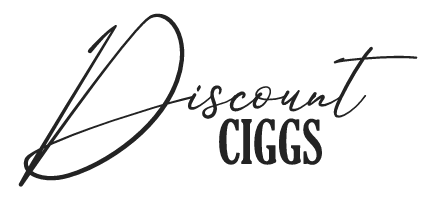The Philately of Tobacco
Philately, synonymous with the exploration of postage stamps and their historical context, serves as a captivating conduit for aficionados to navigate the multifaceted corridors of culture, history, and society. The myriad themes depicted on these stamps often chronicle changing societal paradigms, with the representation of tobacco and smoking standing out prominently. These visual narratives, steeped in symbolism, vividly echo societal transitions, while simultaneously underscoring the indelible mark left by the tobacco sector on the global economic tapestry. The realm of tobacco-centric stamps is vast and variegated, seamlessly intertwining subtle societal undercurrents with the unbridled passion of stamp collectors, thereby forming a mosaic of memories, meanings, and milestones.
Overview of postage stamps featuring tobacco and smoking
Postage stamps, those minuscule fragments of paper that have journeyed across continents, have borne witness to countless narratives from their very inception. One such enduring narrative revolves around the world of tobacco. Since the dawning era of stamp issuance, imagery centered on tobacco has been a recurring theme. These visual imprints span a diverse range, with some offering glimpses into expansive tobacco plantations, underscoring the crop's agricultural significance and its pivotal role in shaping economies. These portrayals not only highlighted the cultivation practices but also encapsulated the spirit of an era where tobacco was an inextricable part of the economic fabric of many nations.
Dovetailing with these agricultural vistas are the evocative vintage advertisements, immortalized on stamps, that harken back to the golden age of tobacco consumption. Stamps adorned with illustrations of meticulously crafted cigars and the swirling smoke of cigarettes evoke a sense of nostalgia, transporting one back to times when tobacco advertisements were ubiquitous. To augment this rich tapestry, some stamps have chosen to feature luminaries and celebrated figures, renowned for their smoking proclivities. These stamps elegantly tether iconic personalities to the act of smoking, presenting a multifaceted perspective on tobacco's influence on culture, lifestyle, and even individual identities.
Societal messages and histories captured through tobacco-themed stamps
Postage stamps, beyond their primary function of facilitating mail, have always mirrored the zeitgeist of their times, encapsulating the prevailing sentiments, beliefs, and societal dynamics. One theme that stands testament to this reflective nature of stamps is that of tobacco. Through the annals of time, the shifts in society's perspective on tobacco have been faithfully echoed in the evolving designs and imageries on these stamps. The early 20th century bore witness to an era where smoking was not just an accepted norm but also a celebrated indulgence. Stamps from this period are illustrative of this sentiment. Their designs frequently glorified the act of smoking, with imagery of elegant cigar lounges, sophisticated smokers, and swirling tendrils of smoke capturing the essence of an epoch where tobacco was synonymous with luxury, relaxation, and even camaraderie.
However, as the pages of history turned and the latter half of the century approached, a paradigm shift began to take root. The once-celebrated tobacco industry found itself under increasing scrutiny, as revelations about the health hazards associated with smoking started to emerge. Stamps, in their characteristic reflective manner, began mirroring this change. The glorification of tobacco was slowly replaced with messages cautioning against its use. This period saw the rise of stamps championing anti-smoking campaigns, with poignant visuals of affected lungs, cautionary symbols, and emphatic messages highlighting the perils of tobacco consumption. Such stamps became powerful tools in the hands of public health campaigns, amplifying their voice and reaching audiences far and wide.
This dual narrative of tobacco, as seen through the lens of philately, offers a fascinating glimpse into the perennial tug-of-war between commercial interests and public health. On one hand, the tobacco industry, armed with its deep pockets and influential lobbying, sought to cement its position, often resorting to seductive advertising, and branding to allure potential consumers. On the other hand, health advocates and activists, fueled by mounting evidence of tobacco-related ailments, waged a relentless battle to alter public perception. The resulting equilibrium, or lack thereof, is vividly etched on the canvas of postage stamps. They serve as silent yet eloquent testimonies to the shifting sands of societal norms, commercial imperatives, and the overarching quest for public well-being.
The hobbyist community and their collections
The world of philately, with its diverse spectrum of collectors and enthusiasts, has always been a hub of shared passion, history, and knowledge. Within this expansive domain, there exists a dedicated cohort of philatelists who have zeroed in on a niche but profoundly significant theme: tobacco. This subgroup, driven by an unwavering interest in tobacco-themed stamps, has carved out a distinct space for themselves within the broader collecting community. The intensity of their focus is evident in the gatherings they organize—be it in brick-and-mortar clubs with old-world charm or on the bustling forums of the digital age. In these congregations, myriad discussions unfurl—ranging from the excitement of a newly acquired piece to the intricacies of a particular stamp's design. Trades are negotiated, insights exchanged, and bonds of camaraderie strengthened. For these philatelists, every stamp is not just a piece of adhesive paper but a tapestry of stories, histories, and cultural nuances.
These collections, meticulously curated and passionately expanded, manifest in a plethora of forms. Some collectors pride themselves on possessing stamps exclusive to a particular country, charting the nation's tobacco narrative with precision. Others embark on a more ambitious quest, traversing international boundaries with their collections and amassing tobacco-themed stamps from corners far and wide. Such global collections become a testament to the ubiquitous influence of tobacco—an influence that transcends geographical confines, permeating societies, and cultures across continents. These stamps, bearing imagery ranging from lush tobacco fields to vintage smoking advertisements, chronicle a tale of an industry's evolution, its societal implications, and its enduring legacy.
However, the significance of these collections extends beyond mere aesthetics or the thrill of acquisition. Each stamp, carefully preserved within these collections, is a sentinel of history. They are silent witnesses to the ebbs and flows of societal values, the transformations in public perception, and the myriad intersections of commerce, culture, and health. Through their stamps, these philatelists are not merely indulging a hobby; they are undertaking the responsibility of safeguarding slices of history. Each album page, with its array of stamps, narrates episodes from past episodes that shed light on the dynamics of a society, its beliefs, its victories, and its challenges. In essence, these collectors, with their unwavering dedication, are the custodians of a legacy, ensuring that future generations can glean insights from the past, one stamp at a time.
The Role of Tobacco in World Economies
Tobacco, as an economic entity, has woven itself into the fabric of numerous global economies, leaving an indelible mark on their growth trajectories and developmental narratives. Its cultivation, processing, and trade have historically constituted a major economic backbone for many nations, transcending mere agricultural produce to become a cornerstone of their fiscal foundations. Through the medium of stamps, this economic prominence of tobacco is vividly chronicled. These adhesive pieces of paper, adorned with imagery celebrating the tobacco trade, meticulously detailed production processes, and depictions emphasizing export-centric themes, offer a window into the magnitude of tobacco's economic impact. Each stamp, in its silent eloquence, echoes the integral role that tobacco has played in shaping trade balances, influencing policies, and even determining diplomatic relations among nations.
For several countries, tobacco's significance isn't just restricted to being a mere commodity. It metamorphoses into a lifeline, generating substantial revenue and fostering employment across its value chain—from the sun-drenched fields where the leaves are cultivated to the bustling markets where the final cigarette products find eager consumers. The scope of employment created by the tobacco industry is vast, encompassing farmers, traders, artisans involved in crafting cigars or cigarettes, marketers, and even logistics providers ensuring global distribution. Stamps highlighting these facets stand as testimonials to the myriad lives touched, influenced, and sustained by the expansive umbrella of the tobacco industry. The intricate patterns on a cigar, the plumes of smoke from a freshly lit cigarette, or the sun setting on vast tobacco fields, as portrayed on these stamps, symbolize not just processes but people, dreams, and livelihoods.
However, beyond its immediate economic contributions, tobacco's role in some nations extends to shaping identities and cultural ethos. In regions where tobacco cultivation and trade have persisted for centuries, it has seeped into folklore, traditions, and even communal gatherings. Such deep-rooted cultural connections, intertwined with the economic narrative, lend an additional layer of complexity to tobacco's portrayal on stamps. They don't just capture a trade or a revenue stream; they encapsulate stories, legacies, and a collective consciousness. From this vantage point, the representation of tobacco on stamps transcends mere economic documentation. It emerges as a confluence of history, culture, commerce, and community, painting a multifaceted portrait of nations and their intricate dance with the leaf that has, for ages, been both celebrated and debated.
Celebrated Personalities and their Connection to Tobacco
Throughout history, the interplay between celebrated personalities and their predilections has been a subject of fascination, offering insights into the nuances of their characters and the eras they lived in. Tobacco, with its evocative associations, has been a consistent companion to some of the most iconic figures in history, from the stalwart statesman Winston Churchill to the witty literary genius Mark Twain. Philately, in its quest to document and celebrate significant facets of human history, has often immortalized these connections. Stamps bearing the likenesses of such luminaries, often depicted with a cigar clenched between their teeth or a pipe cradled thoughtfully, serve as a testament to the profound influence of tobacco on personal style, identity, and the zeitgeist of their times.
These visual commemorations do more than just capture a moment; they delve into the intricate dance of personal identity and societal symbols. For many of these personalities, tobacco was not merely a habit; it evolved into an emblematic accessory. It became synonymous with leisurely contemplation, as evidenced by the image of a writer deep in thought, pipe smoke curling around them, crafting narratives that would stand the test of time. For leaders like Churchill, the steadfast cigar, often a fixture in his hand as he navigated the tumultuous waters of world politics, became symbolic of resilience, determination, and unyielding spirit. These stamps, in their quiet eloquence, tell tales of tobacco as an ally in moments of solitude, a companion during brainstorming, or even a prop that accentuates one's charisma.
Yet, beyond the veneer of style and personal identity, there lies a deeper narrative where tobacco sometimes transitioned into a symbol of rebellion or nonconformity. For a segment of celebrated figures, flouting societal norms or challenging established conventions was second nature, and tobacco played its part in this narrative. Lighting a cigar or puffing on a cigarette, especially in settings where it was deemed inappropriate or rebellious, became acts of quiet defiance. Through the medium of stamps, these moments, too, find their place in history. The meticulously detailed illustrations, capturing the play of light on smoke or the intensity in the eyes of these personalities, reflect the multifaceted relationship between renowned individuals and the leaf that has sparked countless conversations. In essence, these philatelic treasures not only immortalize moments but also encapsulate ideologies, moods, and the inexorable intertwining of personal choices with broader societal contexts.
The Artistic Evolution of Tobacco-themed Stamps
Tobacco-themed stamps have long served as a fascinating mirror to the artistic evolution unfolding over time. From the humble beginnings, where these stamps sported straightforward and rudimentary designs, to the contemporary era marked by complexity and nuance, the journey has been one of artistic exploration and innovation. The early renditions predominantly revolved around uncomplicated portrayals of tobacco leaves or basic imagery of smoking. These initial designs, while modest, laid the foundation for what would become a dynamic tapestry of art, capturing the multifaceted world of tobacco on the minuscule yet impactful canvas of stamps.
Fast forward to the modern epoch, and one witnesses a stark transformation in the portrayal of tobacco on stamps. As art techniques became more sophisticated and diverse, stamp designs began to reflect this richness. Contemporary tobacco-themed stamps are characterized by intricate illustrations, be it detailed sketches of tobacco farming, exquisite representations of cigars and pipes, or evocative imagery that delves into the cultural and societal connections of tobacco. These stamps have transformed into masterpieces, with artists utilizing them as platforms to experiment with styles, play with shades, and impart depth to the narratives they depict. In doing so, they've elevated the realm of tobacco-themed philately, adding layers of artistic depth and allure to an already captivating niche.
Conclusion
In the world of philately, tobacco-themed stamps transcend their physical form as minuscule adhesive fragments. They stand as portals to rich tapestries of tales, chronicles of bygone eras, reflections of societies, and the intricate melding of a vast global industry with intimate personal identities. For those who ardently collect them, the endeavor goes beyond mere accumulation. Every stamp they gather is a testament to their commitment to preserving not just images, but multifaceted narratives. These narratives shed light on the cultural, societal, and economic imprints of tobacco throughout history. Through these collections, philatelists become custodians of invaluable insights, capturing the essence of epochs past, offering commentary on the present, and hinting at the trajectories of the future.
FAQs
Why is the philately of tobacco significant?
The philately of tobacco captures the evolution of societal views on smoking, the economic importance of the tobacco industry, and the intertwining of personal identities with tobacco. It offers a unique lens to study historical and societal changes.
Are anti-smoking campaigns reflected in tobacco-themed stamps?
Yes, as society's views shifted towards understanding the health risks of smoking, many postal authorities issued stamps promoting anti-smoking campaigns and highlighting the dangers of tobacco use.
How can one start a collection of tobacco-themed stamps?
Begin by joining philately clubs or online forums focused on thematic collections. Engage with experienced collectors, attend philately exhibitions, and explore online and physical auction houses.
How do tobacco-themed stamps capture the essence of personal identities?
Stamps featuring celebrated personalities with their smoking habits highlight how tobacco became a symbol of various attributes, be it leisure, deep thought, or rebellion. It depicts how closely personal identities were associated with smoking.
What do modern tobacco-themed stamps primarily focus on?
Modern tobacco-themed stamps often emphasize the dangers of smoking, aligning with global anti-smoking campaigns. They also showcase intricate artistic designs, reflecting the evolving nature of stamp artistry.
References
- NPR: www.npr.org
- Tobacco Free Kids: www.tobaccofreekids.org
- Non-Smokers' Rights Association: nsra-adnf.ca



